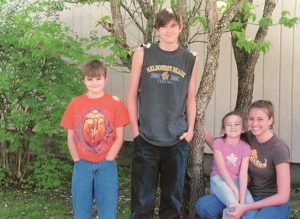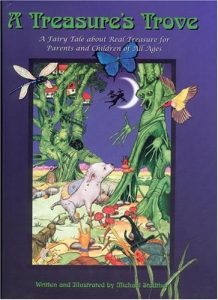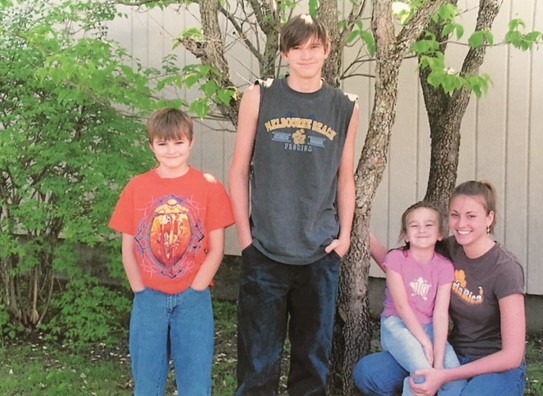
In 2004, A Treasure’s Trove, was released. This armchair treasure hunt by Michael Stadther started off as a quest for twelve tokens hidden across the United States. The found tokens could then be redeemed for a valuable jeweled creature (or cash). Later into the hunt, it was realized there was a bonus token, and also an additional jewel, to find. All total, there were fourteen treasures scattered across the country to find in the A Treasure’s Trove armchair treasure hunt. Their cumulative value was over a million dollars.
As mentioned in Codes, Ciphers, and Puzzles Series: Polybius Square, A Treasure’s Trove was the first armchair treasure hunt my family and I became involved in. We had solved some of the puzzles of the hunt, searched for two of the tokens, but weren’t successful in coming away with any. No matter, though, we had so much fun working on the puzzles, and afterwards, I continued researching lost treasures with the hunt Maranatha – Et in Arcadia Ego. Like Masquerade had inspired Michael, A Treasure’s Trove had introduced me to the wonderful world of armchair treasure hunting; but I must say it was Maranatha that would then inspire me into lifelong questing and the creation of this website, MysteriousWritings.
 The story of A Treasure’s Trove is about twelve forest creatures which are being crystallized and collected by the villainous character, Rusful. Zac, a handsome woodcarver, and Ana, his half elf, half human, wife, with the help of their dog, Pook, try to restore the dying forest and save the creatures. The jewels of the hunt represented the forest creatures within the story.
The story of A Treasure’s Trove is about twelve forest creatures which are being crystallized and collected by the villainous character, Rusful. Zac, a handsome woodcarver, and Ana, his half elf, half human, wife, with the help of their dog, Pook, try to restore the dying forest and save the creatures. The jewels of the hunt represented the forest creatures within the story.
The book encouraged the search for 18K gold tokens hidden across the states. Once a searcher deciphered the clues concealed within the pages of the book, he would go to the location described and retrieve the token to exchange for the treasured jewel.
The jewels were as follows: (with their retail value, cash substitution value, and gemstones featured in the jeweled creature listed afterwards)
Spider: $450,000 / $135,000 (set with one main 6.36ct Kashmir blue sapphire joined with a 21.23ct light yellow diamond, and 404 bead diamonds)
Firefly: $280,000 / $84,000 (set with a 1.44ct alexandrite with 5.91ct oval Burmese ruby, 2 yellow diamonds, and 36 bead diamonds)
Beetle: $54,000 / $16,200 (set with one main 9.61ct tanzanite surmounted by 12 large diamonds, and numerous other smaller diamonds)
Grasshopper: $50,000 / $15,000 (set with eighty-six 1.2 to 2.8mm round demantoid garnets, 25 old European cut diamonds, and 1 ruby)
Butterfly: $46,000 / $13,800 (set with one 1.11ct pear shaped diamond, 332 blue sapphires, and 337 diamonds)
Dragonfly: $25,000 / $7,500 (set with 19 oval and round blue sapphires and 198 bead diamonds)
Hummingbird: $23,000 / $6,900 (set with a large South Sea pearl and numerous other gemstones: 132 diamonds, 118 black diamonds, 34 yellow diamonds, 110 emeralds, and 37 rubies)
Bumble Bee: $22,300 / $6,690 (set with pear shaped Tahitian black cultured pearl with 171 bead diamonds, 68 yellow diamonds, and 43 black diamonds)
Ant: $19,900 / $5,970 (set with three spessartite garnets and 204 bead diamonds)
Caterpillar: $12,000 / $4,000 (seven movable segments, each set with one oval cabochon peridot, two round green diamonds, and two round amethysts)
Snail: $12,000 / $4,000 (set with one 2.6mm round cabochon turquoise and two pink diamonds)
Ladybug: $8,500 / $2,250 (set with six round cabochon Burmese rubies and 51 diamonds)
With the addition of a:
Crystal Pook (dog) and Black Diamond (uncut).
Inside the book were images veiling numerous clues. It seemed like each page could hold a clue of some sort. Many of the images concealed a sentence for crafting a poem. This poem provided instructions on how to find the jewels. The poem was as follows:
Hidden well, no eye can see,
Below sky and above earth be.
Treasures twelve for you to keep
Around the states, twelve places to seek.
Not on private property, nor in anyone’s hands,
Each is outside for you to find,
No digging or prying just reach inside.
An even code, with one piece nary,
Will spell out the sanctuary.
Within the text you have the key,
For the one that is missing you did not see.
A code of numbers five to a side,
Reveals the name where the treasures abide.
With name in hand, the fairies know,
And they will show you where to go.
Seize your token and reach your goal,
The secret is not half but it is not whole.
The lines to this poem were found by multiple means. Some puzzles needed cut and pieced together to provide the sentences. Others were mirrored, hidden in blank spaces, or concealed in vines, branches, spider webs, etc. They were very cleverly hidden and fun to find. The lines to the poem were in order of the pages they were found, and so at least that was a given.
Once the poem was understood, a searcher knew he needed to use a Polybius square, filled with the letters A to Z without the Q, to decipher the location of the jewel. And then after having deciphered the location’s name, the ‘fairies’ would show a searcher where to go at that particular location. The last line of the poem was a play on words, and told searchers exactly where to look for the tokens. They were hidden in knotholes (not whole) of trees.
Another key clue for finding the tokens was images of forest creatures hidden in the book. There were pairs of them. One creature image would be on the page showing what to decode to reveal the location, and the other creature image was found near a fairy who was showing where to go at that location.
So to solve the location and retrieve a token for the hunt, a searcher did the following:
- Discovered the hidden poem and understood its meanings
- Discovered the pairs of hidden images of the creatures in the book
- One creature was found on the page where coded number pairs needed to be discerned. These pair of numbers were applied to the Polybius square, and after deciphering, the general location name was revealed.
- The other creature was found on a page where a fairy was pointing. The location the fairy was pointing would match to that of an actual map of that general location and give a precise spot.
The creature pair providing the general location and specific place on the map would be the creature token a searcher would find.
- Drove to the location and reached in the knothole of the tree at the exact spot to retrieve the token. (matching tree images were in the book as well)
The pair of numbers to use on the Polybius square were concealed on the pages with the hidden images of one of the creatures. Something within the image had to represent the numbers 1 thru 5 to use on the Polybius square.
The Polybius square is a 5×5 grid filled with letters of the alphabet. Each column and row is numbered 1 thru 5. To decode a letter a person takes the letter of the numbered column and row that a pair of numbers assigns. For example, if the square is filled with the letters A, B, C, D, and E in the top row, then 1-1 would be A (first row, first column), 1-2 would be B (first row, second column), and so on, for 1, 5 to be E (first row, fifth column).
The rest of the rows are filled accordingly. In the case of the Polybius square used in A Treasure’s Trove, the Q was ‘nary’, so the 5×5 grid held all other 25 letters of the alphabet within its rows and columns.
The tokens of A Treasure’s Trove were found in the following locations:
Ant: Swanny City Park, Moab, Utah
Bee: Santa Rosa Lake State Park, New Mexico
Beetle: Badlands National Park, South Dakota
Butterfly: Nantahala National Forest, North Carolina
Caterpillar: Lake Dardanelle State Park, Arkansas
Dragonfly: Ricketts Glen State Park, Pennsylvania
Firefly: Foss State Park, Oklahoma
Grasshopper: James Baird State Park, New York
Hummingbird: Emily’s Pond, Jackson, Wyoming
Ladybug: Paintsville Lake State Park, Kentucky
Snail: Lake Anita State Park, Iowa
Spider: Prickett’s Fort State Park, West Virginia
Pook: Newaygo State Park, Michigan
Rusful: Golden Gate Park, San Francisco
Every searcher who found a token decided on taking the Jewel instead of the cash value for the prize. Later many of the searchers sold the jewels at auction. Some searchers kept the jewels.
Sotherby’s Auction sold some of the jewels together in October of 2007.
The following jewels sold for:
Ant: $7,500
Bee: $13,750
Beetle: $20,000
Firefly: $139,000
Grasshopper: $12,500
Spider: $205,000
After the success of A Treasure’s Trove, Stadther published another armchair treasure hunt book entitled Secrets of the Alchemist Dar in September of 2006. This book included clues to find one hundred rings valued over a million dollars. The book ran into some legal issues and the hunt was discontinued. None of the rings were able to be claimed.
Best of luck with all that you seek! Always Treasure the Adventure!


Fun story! I hope we get another hunt like this in the future, I was unaware of the world of armchair treasure hunts when this one was going on. Bummer on the dragonfly miss but cute picture of the kids!
I remember this hunt! My young daughter and I worked on it right after it came out. Fun stuff!
Just reading this article now!! I was the writer of the note you found in in that dogwood tree! What an experience we had that day, and the years that followed! Receiving our grasshopper on Christmas morning live on Fox and Friends…Michael Stadther let me wear the million dollar ring that was to be a prize in the next treasure hunt! We were present for the Sotheby’s auction, made an appearance on The Today Show…it all feels like a lifetime ago!